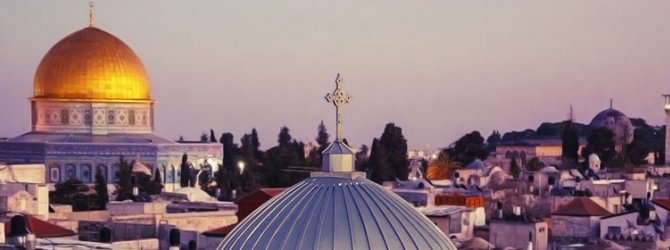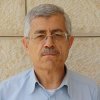-
Capturing the hearts and minds of the next generation of ...
Capturing the hearts and minds of the next generation of Jerusalemites

The deprivation of basic human rights of the citizens of Jerusalem is leading young people to take action – very young people, and their action is not always non-violent. Guest writer, Walid Salem, considers what is causing the younger generation of Palestinian Jerusalemite’s to take such action, and what can be done to break the cycle.
When Faisal Husseini died in 2001, Jerusalem lost one of its most notable leaders. You could say Faisal was the last leader to have really made a sacrifice for the Palestinian-of-Jerusalem.
He hailed from an era when leaders were close to the people: he would walk the streets, talking to everyone, trying to understand their concerns. He was not afraid to be an activist; he would fight demolition orders by standing in front of a building all on his own. He would invite different factions to his offices in order to consult with them, and make participatory decisions.
When Husseini died, he left a void that could not be filled. No leader since has come close to being the personality that he was. Instead, we have witnessed a fragmentation of leadership. A shift from central to local administration; causing competition and animosity among the people and groups who are meant to be working towards the same goal. The leadership has lost the legitimacy that once made it powerful.
Political fragmentation at the highest levels has left local leadership isolated, without a central leadership to support them. These local leaders exclude the youth from decision-making in communities, arguing that experience can only come with age. Even more concerning is the exclusion of women - young and old - from this process.
When you exclude people – women, youth, or any group – they become disenfranchised and disenchanted. Instead of organised, consistent participation, we increasingly see sporadic and spontaneous action. This action has less impact, less ability to affect change, compared to action that is coordinated and all encompassing.
The youth, in particular, are increasingly frustrated.
When 12-year old Mohammed Abu Khdeir was kidnapped and burned to death in July 2014, the children of Jerusalem felt threatened. They realised how easily it could have been one of them. With this fear comes an instinctive sense of defensiveness. Children, as young as seven, are turning to violence; carrying small stones to throw at Israeli police and joining in the riots on the street.
These young people feel there is no clear future. When this generation graduates from university they have two options: they can either become employees of the Palestinian Authority, requiring that they cross a checkpoint every day and face humiliation and degradation by the Israeli soldiers; or work in west Jerusalem, where they receive sub-standard work contracts, lower salaries than their Israeli colleagues and, again, face humiliation and degradation.
When we combine a threatening and deadly environment with a gloomy and uncertain forecast, it is understandable that young Palestinian Jerusalemites are turning to violent means. Human instinct is to protect oneself, and they are doing this the only way they know how: by throwing stones.
Each night, young people organize demonstrations in east Jerusalem. Typically aged between 18 and 25, they coordinate the even younger participants – generally 7 to 14 – to band together in an anger-driven reaction to Israeli policies.
We must create another channel for self-expression and move these young people from being reactionaries to being the builders of the future Palestine. We must give them the developmental channels needed to build the future country they envisage. They must feel empowered that they are doing something meaningful and that their action can have a direct impact. When they see that this type of behavior is much more powerful than throwing a stone, we will begin to see a change in their outlook. In short, we must begin to reestablish Palestinian facts on the ground. Israel was built by creating Zionist facts on the ground. This will involve projects like constructing collective housing for young couples and other community-based projects. East Jerusalemites know the obstacles well, but there are gaps in Israeli municipality law that can allow such development.
This change, however, will remain elusive if there continues to be so much fragmentation among the various parties and leaders and Palestinian communities. Currently, the parties interact with the younger groups by preaching at them. They are not involving them in any of the actual discussion or decisions, nor are they showing them any real guidance. Palestine's youth energy remains untapped and is a critical factor in political progress.
The impact of these youth movements is not all bad. For several years now the control and dominance of Israel in Jerusalem looked for the outsiders as if become accepted; Israel felt that their presence was stable and the Palestinians had become used to the occupation. The youth movement has displaced this. The occupation is contested and young people who were born during the occupation period, in particular, continue to oppose it.
This has come as a surprise to many, not least of all Prime Minister Netanyahu who until recently was espousing the notion that Palestine was united. The international community, too, has changed its sentiments in recent months. Discussions around future policy for the country have begun to evolve to include the fact that the Palestinian population are simply not satisfied with the occupation.
Finally, the very fact that the youth are engaged on this matter and are willing to take to the streets shows they are an asset to the Palestinian cause. The leadership has a responsibility to harness this energy and turn it into an opportunity to work with them on a legitimate front. They must permit them to integrate and participate. This is their future Palestine and they deserve this opportunity.

